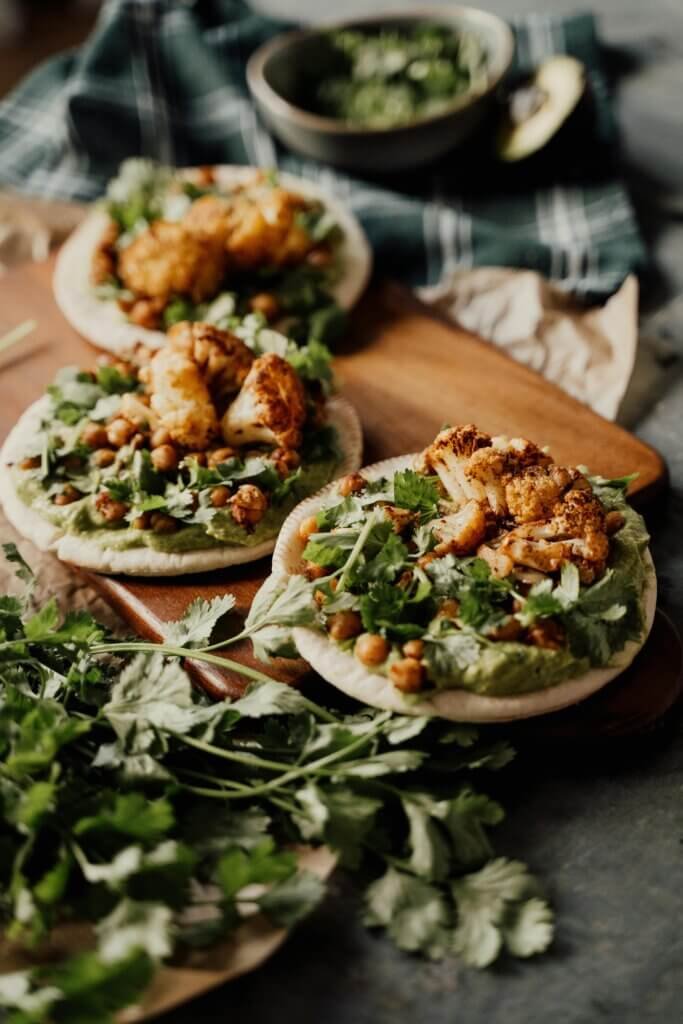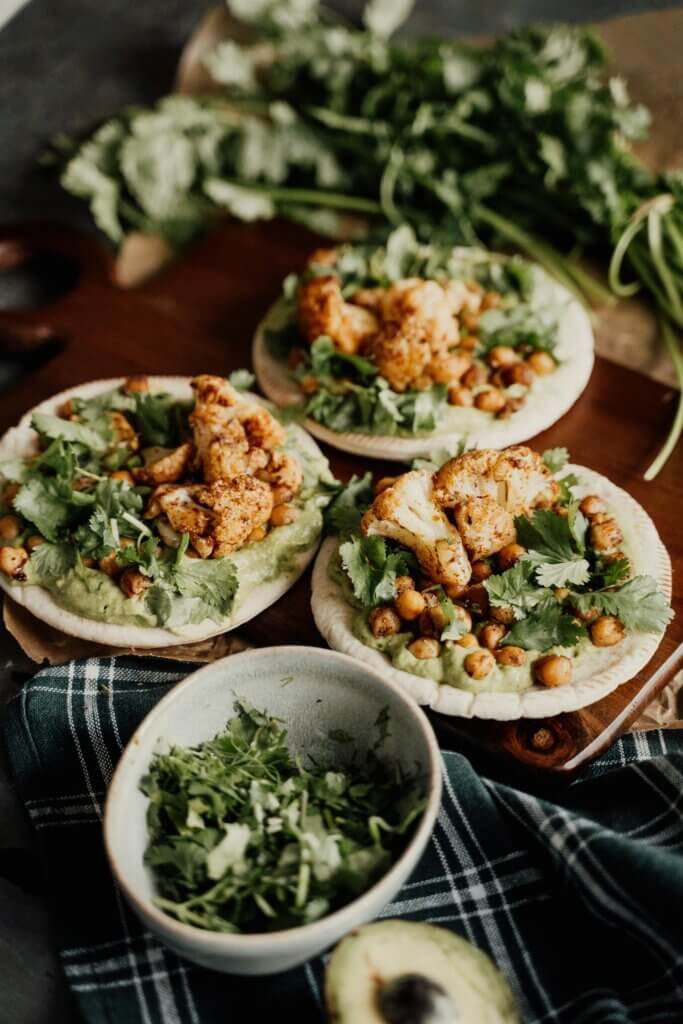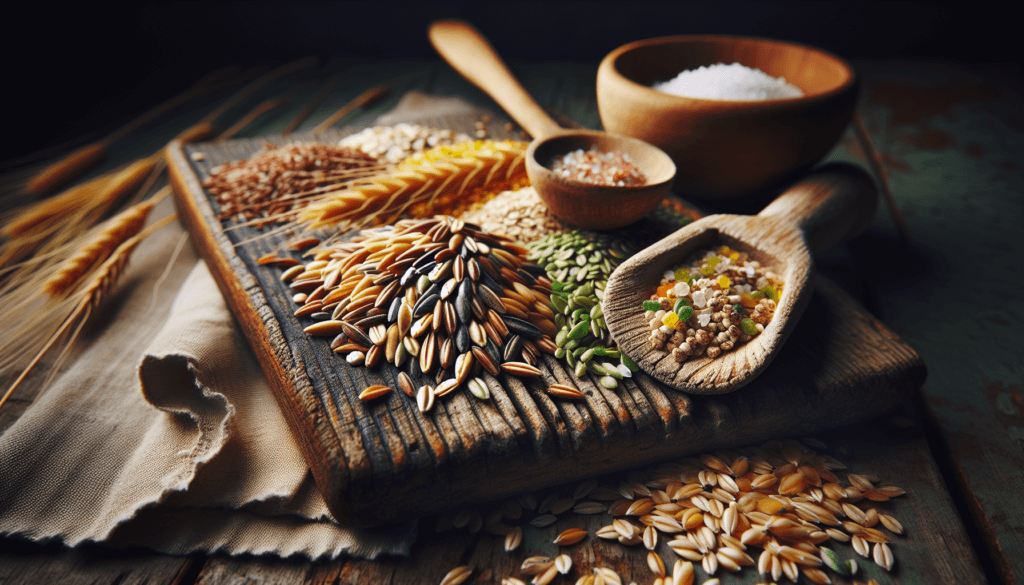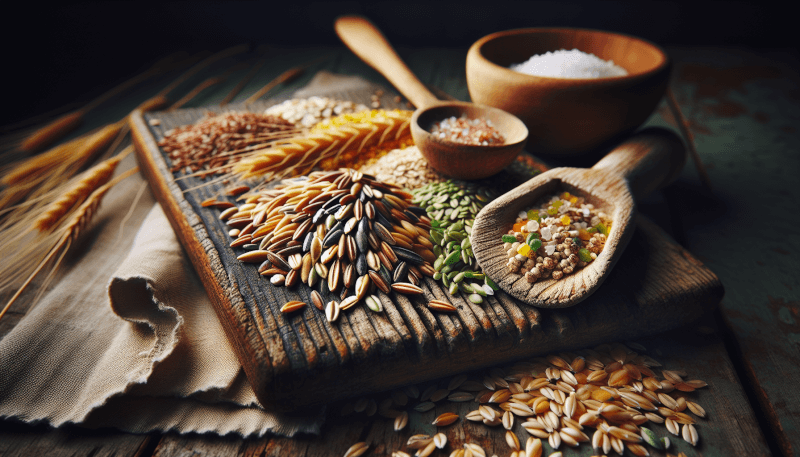Whether you’re a seasoned chef or a beginner in the kitchen, cooking and seasoning grains can sometimes be tricky. From rice and quinoa to couscous and barley, these tiny but mighty grains can make or break a dish. But fret not, because we’ve got you covered with some key tips that will help you cook and season grains like a pro.

Choosing the Right Grains
When it comes to cooking grains, it all starts with selecting the right type of grain for your dish. There are a variety of grains to choose from, each with its own unique flavor and texture. Some popular options include rice, quinoa, barley, and farro.
Understanding Different Types of Grains
To make an informed decision, it’s important to understand the different types of grains available. Rice, for example, comes in various varieties such as white rice, brown rice, jasmine rice, and basmati rice. Each type has its own cooking time and flavor profile. Quinoa, on the other hand, is a versatile grain that is packed with protein and can be used as a base for salads, side dishes, or even as a substitute for rice. Barley and farro are hearty grains that add a chewy texture and nutty flavor to your meals. By understanding the characteristics of each grain, you can choose the one that best suits your taste and culinary needs.
Considering Cooking Time and Texture
Another important factor to consider when choosing grains is their cooking time and texture. Some grains, like rice, cook relatively quickly, while others, such as barley or farro, require a longer cooking time. It’s essential to take these factors into account when planning your meals, especially if you’re short on time. Additionally, consider the texture you want to achieve in your dish. If you prefer a more tender grain, opt for rice or quinoa. For a heartier texture, choose barley or farro. By understanding the cooking time and texture of different grains, you can ensure that your meals turn out perfectly every time.
Looking for Whole Grain Options
When selecting grains, it’s always a good idea to opt for whole grain options whenever possible. Whole grains are more nutritious as they retain the bran, germ, and endosperm, which contain essential nutrients such as fiber, vitamins, and minerals. By choosing whole grain options, you can add a healthy twist to your meals without compromising on taste. Look for labels that say “whole grain” or “100% whole wheat” to ensure that you’re making a wholesome choice for your grain-based dishes.
Preparing the Grains
Once you’ve selected the perfect grains for your meal, it’s time to prepare them for cooking. Proper preparation ensures that your grains are clean, tender, and ready to absorb all the flavors of your dish.
Rinsing and Sorting
Before cooking your grains, it’s important to rinse them under cold water to remove any dust, debris, or excess starch. This step is particularly crucial for rice and quinoa, as it helps remove the powdery coating called the “bran” that can make the grains clump together. By rinsing and sorting your grains, you’ll ensure a cleaner final product and avoid any unwanted grittiness in your dishes.
Soaking for Improved Texture
For some grains, soaking can greatly improve their texture and reduce cooking time. Soaking grains like barley or farro overnight in water or broth helps soften their hulls, making them easier to chew and digest. It also cuts down on cooking time, making meal preparation more efficient. Soaking is particularly beneficial for whole grains, as it helps break down enzymes that can interfere with proper digestion. If you’re short on time, even a quick soak for an hour or two can make a noticeable difference in the texture of your grains.
Toasting for Enhanced Flavor
Toasting grains before cooking adds a delicious nutty flavor and enhances the overall taste of your dish. Simply heat a dry skillet over medium heat, add the grains, and stir them until they turn golden brown and give off a fragrant aroma. Toasting is especially beneficial for grains like quinoa, where it can help remove any bitter undertones. This step is quick and easy but can make a world of difference in the final flavor of your cooked grains.

Cooking Methods
Once your grains are prepared, it’s time to cook them using various methods. The cooking method you choose will depend on the type of grain you’re using and the texture you want to achieve.
Boiling
Boiling is the most common and straightforward method for cooking grains. Simply bring a pot of water to a boil and add your grains. Reduce the heat to a simmer and cook until the grains are tender. This method works well for rice, quinoa, and other small grains. Keep in mind that the cooking time may vary depending on the type of grain, so follow the instructions on the package or use a recipe as a guide.
Simmering
Simmering is similar to boiling but uses a lower heat setting. By simmering grains, you can achieve a more tender texture while infusing them with the flavors of other ingredients in your dish. This method is ideal for heartier grains like barley or farro, which require a longer cooking time to soften their chewy texture. Simmering allows the grains to absorb the flavors of the liquid they’re cooked in, resulting in a more flavorful final product.
Steaming
Steaming grains is another popular cooking method, especially for grains like couscous or bulgur. To steam grains, place them in a sieve or steamer basket over a pot of boiling water. Cover and let the steam cook the grains until tender. Steaming locks in the natural flavors of grains while maintaining their shape and texture. It’s a quick and efficient cooking method that preserves the nutrients and adds a light, fluffy quality to your grains.
Pressure Cooking
If you’re looking for a faster cooking time without sacrificing texture, consider using a pressure cooker. Pressure cooking is a great method for grains like rice, as it reduces the cooking time significantly while producing perfectly tender results. Simply follow the manufacturer’s instructions for your specific pressure cooker and adjust the cooking time accordingly. Pressure cooking allows the grains to absorb the liquid more efficiently, resulting in evenly cooked and flavorful grains in a fraction of the time.
Using a Rice Cooker
A rice cooker is a convenient and foolproof way to cook grains, especially rice. Simply add your grains and water to the rice cooker, select the appropriate setting, and let the machine do the work for you. Rice cookers automatically adjust the temperature and cooking time, yielding perfectly cooked grains every time. This method is particularly useful if you cook grains regularly and want consistent results without the need for constant monitoring.
Water and Salt Measurements
Proper measurements of water and salt are key to achieving perfectly cooked and flavorful grains. Understanding the right water-to-grain ratio and the role of salt in the cooking process is essential for optimal results.
Determining the Right Water-to-Grain Ratio
Each grain has its own ideal water-to-grain ratio for cooking. As a general rule of thumb, the standard ratio is 2 parts water to 1 part grain, but this can vary depending on the type of grain and the desired texture. For example, some grains, like rice, require a bit more water to achieve a tender texture, while others, like quinoa, need less. Consult the package instructions or a trusted recipe for the specific water-to-grain ratio of the grain you’re cooking. Adjusting the water amounts can make a significant difference in the final texture and consistency of your grains.
Adding Salt for Flavor Enhancement
While salt is optional, adding it to the cooking water can enhance the overall flavor of your grains. Salt helps bring out the natural flavors of the grains, making them more vibrant and satisfying. For added convenience, try using kosher salt, which is less salty than table salt, allowing you to add more without oversalting your dish. Taste as you go and adjust the amount of salt to your liking. Remember that you can always add more salt at the end of the cooking process, but you can’t remove excess salt once it’s dissolved into the grains.

Seasoning Options
Seasoning is a crucial step in creating delicious and flavorful grain dishes. There are countless seasoning options to choose from, each offering a unique taste profile and adding depth to your meals.
Using Herbs and Spices
Herbs and spices are a fantastic way to add flavor and diversity to your cooked grains. From classics like basil, thyme, and oregano to exotic spices like cumin, turmeric, and cardamom, the possibilities are endless. Consider the flavor profile of your dish and pair it with complementary herbs and spices. For example, if you’re cooking a Mediterranean-inspired grain salad, basil, oregano, and lemon zest can add a refreshing and bright flavor. Don’t be afraid to get creative and experiment with different combinations to find your favorite seasoning blend.
Incorporating Aromatics
Aromatics, such as garlic, onions, and shallots, can elevate the flavor of your grains to new heights. Sauté them in a little oil or butter before adding the grains to the pot for an added layer of depth and complexity. Aromatics bring out the natural flavors of the grains and work well with a wide range of cuisines and dishes. Remember to adjust the amount of aromatics based on your personal preference and the specific recipe you’re following. They can be powerful in taste, so a little can go a long way.
Experimenting with Different Flavors
Don’t be afraid to think outside the box and experiment with different flavors to create unique and exciting grain dishes. Consider adding a splash of citrus juice, like lemon or lime, to brighten up the flavors and add a tangy twist. For a touch of sweetness, try incorporating honey, maple syrup, or a sprinkle of cinnamon. Explore the world of condiments and sauces, such as soy sauce, fish sauce, or hot sauce, to add a punch of umami or heat. The more you experiment, the more you’ll discover your personal taste preferences and create standout grain dishes that will impress yourself and others.
Avoiding Common Mistakes
While cooking grains is a relatively simple process, there are a few common mistakes that can affect the final outcome of your dish. By being aware of these pitfalls, you can ensure that your grains turn out perfectly every time.
Overcooking
One of the most common mistakes when cooking grains is overcooking them. Overcooking leads to mushy, clumpy grains that lack texture and can be unappetizing. To avoid this, follow the recommended cooking time on the package or recipe and periodically check the grains for doneness. Remember that the grains will continue to cook slightly even after you remove them from the heat, so it’s better to err on the side of slightly undercooking them.
Undercooking
On the other end of the spectrum, undercooking grains can result in a crunchy or chewy texture that may not be enjoyable to eat. Make sure to cook grains until they are tender but still have a slight bite. This allows the grains to fully absorb any flavors from sauces or seasonings without losing their individual texture. If in doubt, taste a few grains to determine if they are cooked to your liking.
Not Letting the Grains Rest
After cooking, it’s important to let your grains rest before serving or fluffing them. Allowing the grains to sit for a few minutes after cooking allows the moisture to redistribute throughout, resulting in a more evenly cooked dish. It also helps prevent the grains from becoming sticky or clumpy when fluffed. Take this opportunity to prepare any additional ingredients or sauces, as the resting time will ensure a more cohesive and flavorful final dish.
Skipping the Fluffing Step
Fluffing cooked grains may seem like an unnecessary step, but it can make a significant difference in the final texture and presentation of your dish. Fluffing involves using a fork or a spoon to gently separate the grains, ensuring they don’t clump together and maintaining their individuality. This step also helps release any excess moisture, resulting in light and fluffy grains. Simply run a fork through the grains and gently fluff them up before serving. It may seem like a small step, but the difference it makes will be noticeable.

Adding Extra Flavor and Texture
If you want to take your grain dishes to the next level, consider adding extra flavor and texture with the help of complementary ingredients. By incorporating nuts, seeds, butter, or other ingredients, you can enhance the taste and mouthfeel of your grains.
Mixing in Nuts and Seeds
Nuts and seeds are an excellent addition to grain dishes, as they add a satisfying crunch and a boost of healthy fats and nutrients. Toasted almonds, pecans, or cashews pair well with a variety of grains and add a rich, nutty flavor. Seeds like sunflower seeds, pumpkin seeds, or sesame seeds are great for adding texture and a subtle nuttiness. Simply sprinkle them over your cooked grains or mix them in for an extra burst of flavor.
Sautéing with Butter or Oil
To add richness and depth to your grains, consider sautéing them with a bit of butter or oil. This step works particularly well with grains like rice, quinoa, or couscous. Heat a small amount of butter or oil in a skillet over medium heat, add your cooked grains, and toss them until they are coated. This simple technique enhances the flavor of the grains and adds a luscious, glossy finish. Experiment with different types of fats, such as olive oil, coconut oil, or flavored butters, to find your favorite flavor combination.
Adding Broths or Stocks
For an extra boost of flavor, consider cooking your grains in stock or broth instead of water. Stock provides a savory depth that can elevate the taste of your grains to new heights. Vegetable broth works well with a variety of grains and adds a subtle umami flavor that complements a range of dishes. Chicken or beef broth can add richness and complexity to heartier grains such as barley or farro. Simply substitute the cooking liquid with your choice of broth and proceed with cooking as usual. The result will be a flavorful grain dish that stands out on its own or as a base for a variety of recipes.
Incorporating Dried Fruits
Dried fruits are a delightful addition to grain dishes, especially when paired with the right flavors and spices. Ingredients like raisins, cranberries, apricots, or dates add a touch of sweetness and chewiness that can balance out the savory notes. Consider adding dried fruits to grain salads, pilafs, or side dishes for a burst of flavor and a hint of natural sweetness. Make sure to soak the dried fruits beforehand if you prefer them to be soft and plump, or use them as is for a chewier texture.
Storage and Reheating Tips
If you have leftovers or are meal prepping, properly storing and reheating cooked grains is essential to maintain their taste and texture.
Properly Storing Cooked Grains
To store cooked grains, allow them to cool completely before transferring them to an airtight container or resealable bag. Store them in the refrigerator for up to five days or in the freezer for up to three months. For added convenience, consider portioning out the grains into individual servings before freezing, allowing you to defrost only what you need. Properly stored cooked grains can be easily incorporated into a variety of dishes, from stir-fries to grain bowls, providing quick and nutritious meals throughout the week.
Efficiently Reheating Leftovers
When it’s time to enjoy your leftover grains, there are a few methods to efficiently reheat them. If you’re reheating a small quantity, the microwave is a quick and convenient option. Simply place the desired amount of grains in a microwave-safe bowl and add a splash of water or broth to prevent them from drying out. Cover the bowl with a microwave-safe lid or microwave-safe plastic wrap and heat in 30-second intervals, stirring in between, until the grains are heated through.
Alternatively, you can reheat larger quantities of grains on the stovetop. Add a small amount of water or broth to a saucepan and bring it to a simmer. Add the grains and stir occasionally until they are heated through. This method allows you to control the heat more closely and ensures that the grains heat evenly.

Serving Suggestions
Grains are incredibly versatile and pair well with a variety of proteins, vegetables, and sauces. Here are some serving suggestions to inspire your culinary creations:
Pairing Grains with Proteins
Grains make excellent side dishes for a range of proteins. Serve fluffy white rice alongside grilled chicken or fish for a simple and satisfying meal. Quinoa is a fantastic base for vegetarian or vegan protein options, such as roasted chickpeas or tofu. Pair nutty farro or barley with roasted beef or lamb for a hearty and flavorful combination. By matching the flavors and textures of your grains with the proteins you choose, you can create a harmonious and balanced meal.
Creating Grain Salads
Grain salads are a refreshing and nutritious option for warm weather or as a light lunch. Combine cooked grains like quinoa or couscous with a variety of vegetables, such as cherry tomatoes, cucumbers, and bell peppers. Add fresh herbs like parsley, mint, or cilantro for an added burst of flavor. Drizzle with a simple vinaigrette or a tangy yogurt dressing to tie all the flavors together. Grain salads are not only delicious but also provide a satisfying crunch and a mix of textures that make each bite exciting.
Using Grains as Side Dishes
Grains can also shine as standalone side dishes, complementing a variety of main courses. Serve jasmine rice or basmati rice with flavorful Indian or Thai curries to soak up the delicious sauces. Barley or farro can be paired with roasted vegetables, such as carrots, Brussels sprouts, or sweet potatoes, for a hearty and comforting side dish. Experiment with different seasoning and ingredient combinations to find the perfect grain side dish for your meal.
Exploring Global Grain Cuisine
Grains play a significant role in various cuisines around the world, offering a wide range of flavors, textures, and cooking techniques. By exploring traditional dishes from different cultures, you can expand your culinary horizons and discover new and exciting ways to enjoy grains.
Discovering Traditional Dishes from Different Cultures
Take a culinary journey and explore traditional grain-based dishes from different cultures. For example, try making risotto, a classic Italian dish made with Arborio rice and simmered in broth until creamy and tender. Or venture into Mexican cuisine with a comforting bowl of arroz con pollo, a dish of chicken and rice flavored with tomatoes, spices, and herbs. Dive into Middle Eastern cuisine by sampling pilaf, a fragrant rice dish often infused with spices like saffron, cardamom, and cinnamon. Each culture has its own unique way of preparing and seasoning grains, offering a wealth of diverse and mouthwatering options.
Incorporating International Flavors in Grain Recipes
Bringing international flavors into your grain recipes is a great way to add variety and excitement to your meals. Expand your spice cabinet with ingredients like garam masala, curry powder, or za’atar to infuse your grains with Indian, Asian, or Middle Eastern flavors. Experiment with different cooking techniques, such as stir-frying grains with soy sauce, sesame oil, and vegetables for an Asian-inspired fried rice. By incorporating international flavors into your grain recipes, you can unleash your creativity in the kitchen and create dishes that transport you to different corners of the world.
In conclusion, cooking grains to perfection involves a combination of choosing the right grains, properly preparing them, using the appropriate cooking methods, and seasoning them to enhance their flavors. By understanding the unique characteristics of different grains and experimenting with various cooking techniques and seasonings, you can create mouthwatering grain dishes that are sure to please. Whether you’re serving them as side dishes, creating grain salads, or exploring global grain cuisine, grains offer endless possibilities for culinary creativity. So dive in, have fun, and let your taste buds guide you on a delicious grain-filled adventure!


